A parent’s dream, in the world of junior tennis, is their child’s success on the court. Success can be measured in many ways. It is the hope of all interested and caring peripheral fans that this success will include the development of important skills that will propel their child toward productive adulthood and healthy life, long after junior tennis. To this end, we all look for integrity, honesty, and sportsmanship to be a part of our children’s makeup. These qualities are honed and refined throughout the rigors of a competitive world, not just in sports, but life in general. In the end, they are valuable tools that a player can take with them.
What a player or their parents may or may not be aware of is that just as ethical and moral skills are developed, more visibly, are the physical skills.
Everyone with an even passing interest in tennis is aware that to be successful, the winner needs to have hit the last good shot. For this to be a routine that moves toward success, work is required. Unfortunately, this is where many families and players specifically have left the bus.
At the recent USTA, Junior National Spring Tournament held in Palm Springs, CA, in April of 2007, a survey on fitness and conditioning was conducted. The 40th Easter Bowl, which is administered very efficiently by Seena Hamilton and her capable staff, brought over 640 junior players together to be a part of the competition in the desert. These are youngsters who are US citizens and recognized as high-level talent.
The injuries and the treatment that players received were evaluated on a daily basis. They were categorized into (a) Pre- and inter-tournament injuries; (b) Lower extremity and upper extremity injuries; (c) Soft tissue, muscular, and bone and joint cases and (d) Conditioning issues that included dehydration and cramps. Finally, they were isolated into categories – acute vs. chronic and play vs. default status. Lastly, the care was categorized as medical (with or without hospitalization) and therapy, including muscles, rehabilitation, modality, and massage therapy.
Analyzing the data demonstrated several telling signs. The first and most relevant was the climatic environment. Since the play was held in a desert, most players and their parents were experiencing an arid environment that was unfamiliar. This said, some were not sufficiently hydrated, and on the hottest days with refreshments unavailable, as well as match scheduling tight, there was a percentage of players who received care for dehydration. While this situation is sometimes inevitable, mention should be made of prevention. Once symptoms of cramping and dehydration occur, it is generally too late to avoid the pitfalls, the worst of which is hospitalization. Injuries appearing between the upper and lower parts of the body appeared to be equal in number with shoulder and upper back, leading ankle, and foot complaints slightly behind. Most of these conditions seen during the event were not present before play except in rare situations where the importance of the event produced nonobjective parental judgment, and the decision to attempt to play was made. In most cases, this led to a defeat, default, or worsening of the condition or injury. Parents should make errors in judgment on the side of conversations even to the disappointing wrath of their ward.
As a result of the capable and aggressive assistance of massage therapist/trainers, Brian Horner and Stephanie Rehe, (a former junior national player), the occurrences of painful, chronic discomforts were mitigated, as they attempted to ease the pain and anxiety of clients. They also made recommendations for specialist referrals as needed and did not hesitate to warn of conditions they felt were precariously dangerous. Some were referred for X-rays, MRI, or blood testing as needed; some for foot orthotics or various strappings or braces as deemed helpful.
Generally speaking, play at this junior national event was unremarkable with their scope and number of injuries as compared to other events. With good staffing, scheduling, and breaks for Mother Nature, the final piece of the puzzle to effectively compete in a national event still remains with the player and his entourage. The key must be the overall welfare of the child and his or her ability to compete. Life is long, and there should always be a consideration for yet another chance the next time.
Simon B. Small, DPM, FACFS, FAAPSM, is a board-certified Sports Medicine Specialist, Podiatrist, and President of Pro-Support Systems, Inc.

